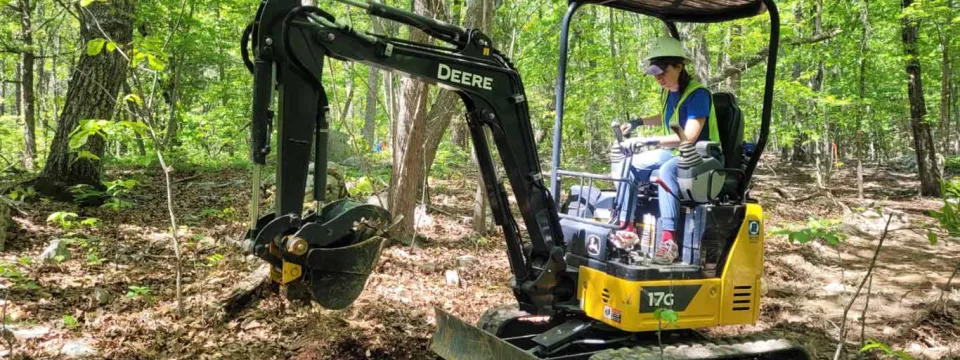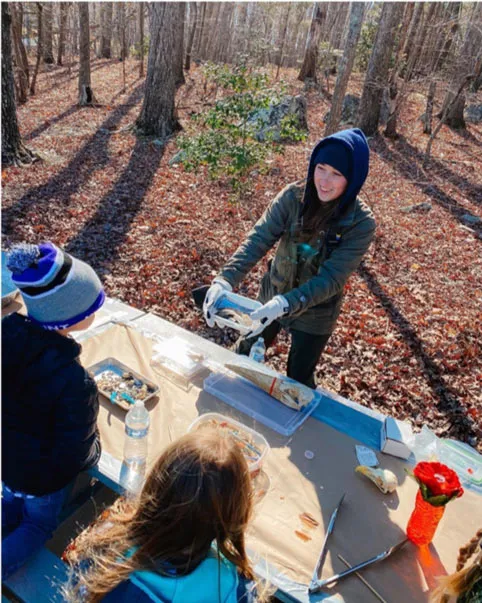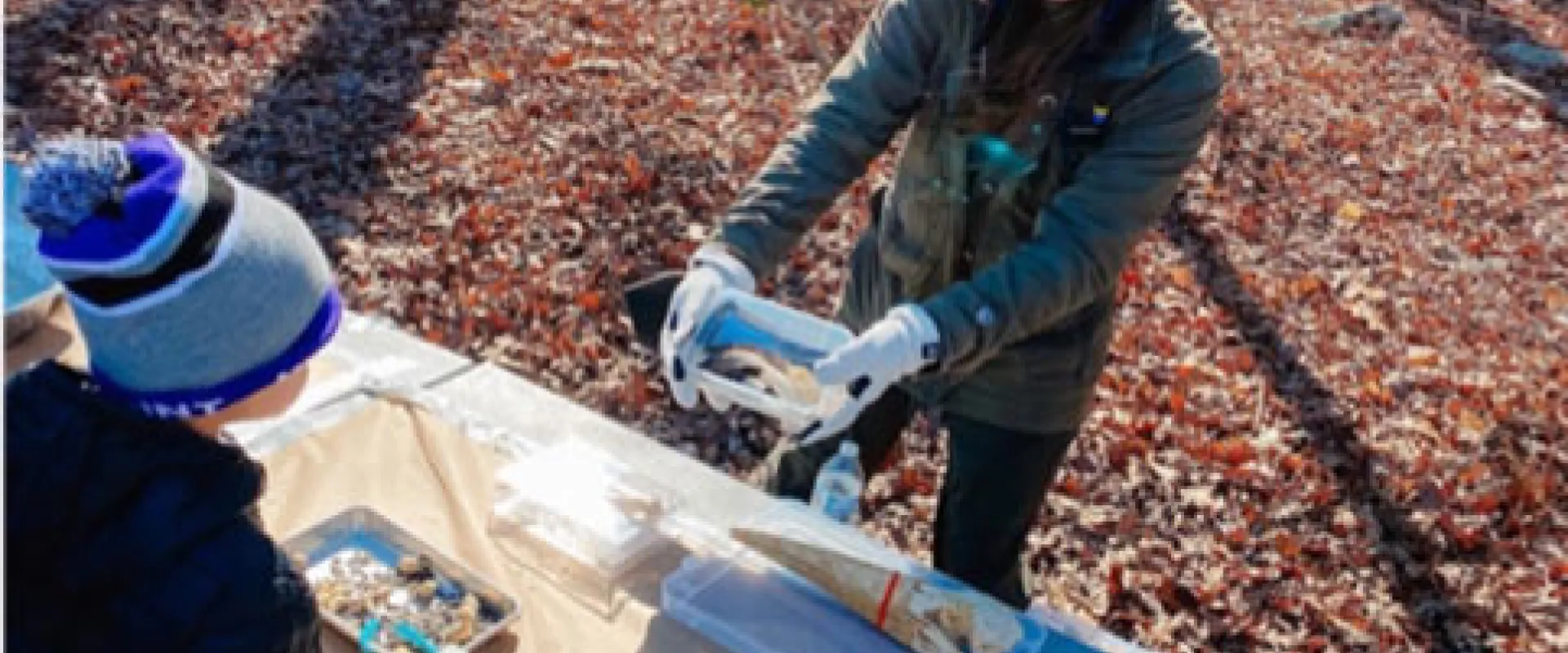Written by Abby Cates, AmeriCorps Natural Areas Conservation Educator, North Carolina Zoo
Have you ever heard of the AmeriCorps program? I had no idea what AmeriCorps was until I saw a job posting and applied for a position in this program. From September 2021 through July 2022, I served as the AmeriCorps Natural Areas Conservation Educator at the North Carolina Zoo. Although this program was new to me, this opportunity launched me into my career as a conservationist.
AmeriCorps is a federal service organization that focuses on uniting people to serve communities for the prosperity of people and the planet. Its mission is “To improve lives, strengthen communities, and foster civic engagement through service and volunteering.” My branch of AmeriCorps is Resilience Corp NC, which partners with the Conservation Trust for North Carolina (CTNC). This branch of AmeriCorps was built to bridge the gap between conservation organizations and local communities through environmental education, stewardship, and outreach. The North Carolina Zoo provides many conservation, research, and education resources, making it an ideal host site to partner with CTNC.
I graduated from Elon University in May 2021 with a degree in Environmental Science and three years of undergraduate research under my belt. Being fresh out of college, I had no idea what I would do, but I knew I wanted to learn some new skills and make the world a better place. Most entry-level positions require anywhere from 2-8 years of experience. How are young people supposed to make a meaningful impact on the world under these parameters?
AmeriCorps offered me a smooth transition from college to the real world, doing work I was passionate about. I did not think I would have the opportunity to make an impact like this until much later in my career journey. During my time, I participated in numerous wildlife research surveys, developed and led environmental education programming, and built two miles of a hiking trail. I was able to serve the community in a way I did not know was possible.
The Zoo owns 2,000+ acres of natural land across central North Carolina. I worked with zoo biologists to perform wildlife surveys using trail cameras for many species, including salamanders, turtles, birds, and mammals. I also participated in head-starting and habitat management projects for the state-endangered Gopher Frog. These projects allowed me to polish my skills from college, learn new techniques, and better understand the ecosystems in the region.
While I was familiar with fieldwork from my undergraduate years, I learned skills that I had not had the opportunity to explore yet. I always had a deep love and appreciation for hiking but never knew the planning, effort, and time that went into making a trail. Early in my service year, I took sustainable trail-building classes that focused on using hand tools and mechanized equipment. I can confidentially say I never thought I would add “excavator certified” to my resume, along with a list of other certifications and skills.

I was initially hesitant about the idea of developing and leading educational programming. My background was in research, and the only time I ever spoke to an audience about conservation and science was in the form of a research presentation. I had opportunities in college to engage in environmental education, but I thought it was less important than research. I understand now that I was wrong. Being able to communicate the scientific jargon is challenging to master and pertinent to the protection of the planet.
It was not until I assisted with an educational program last winter that I realized my potential for environmental education. The program was centered around birds, a topic I knew I could speak on well. At first, I was hesitant since I had little experience educating children and did not know how engaged they would be with me. The event was held outside, and the weather was predicted to be near freezing with even colder wind gusts. Nevertheless, I was determined to communicate my interest and passion for birds to these kids. Hearing their excited “Ooo’s” and “Ahh’s” put a smile on my ice-cold face as I showed them vulture wings and hawk skulls. I was shocked that both the kids and I were able to have fun under these adverse weather conditions.

Teaching kids about birds, beaks, and feathers
During my service year, I developed my personal and professional goals, learned valuable skills that other employers want, and gained confidence in my ability to be a conservationist. I also helped the North Carolina Zoo further its conservation and education efforts. Without this opportunity, I would have spent much more time figuring out my personal and professional goals. As I leave the Zoo and pursue new adventures, I’ve learned that I want to bridge the gap between the scientific community and the public and develop a sustainable system to educate others on how to live with nature rather than against it. I will never forget my time here and the impact I was able to make here.
